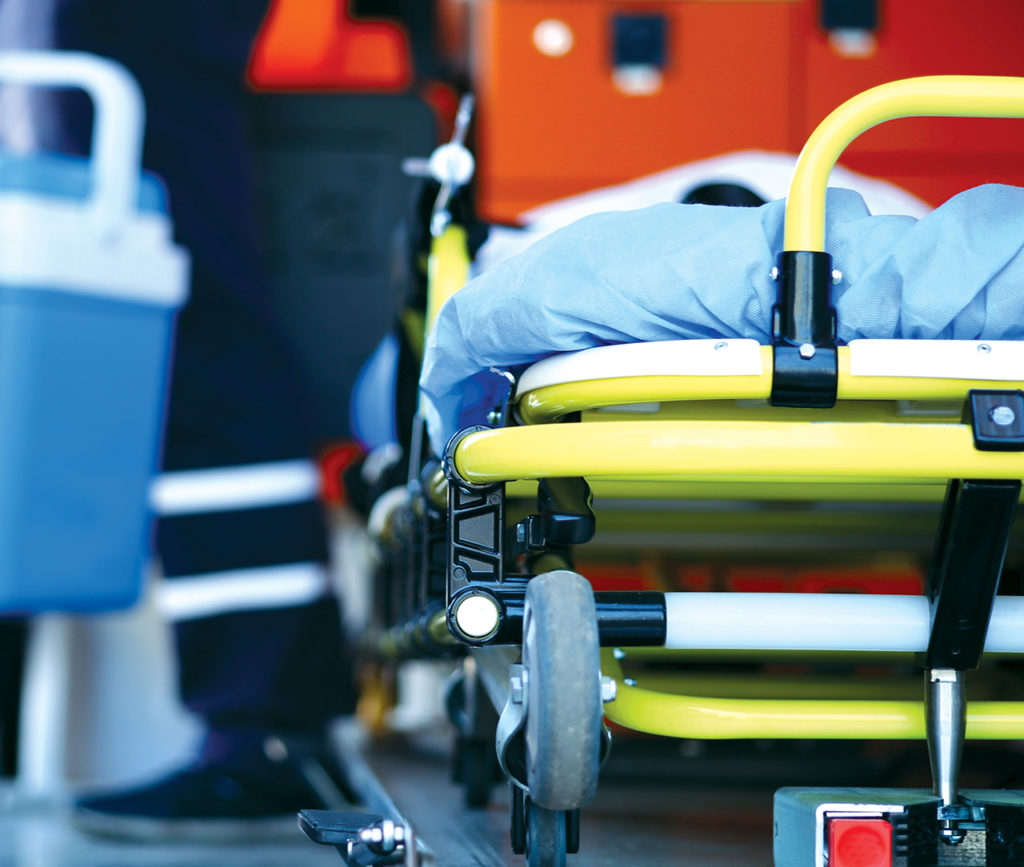About Emergency Preparedness

It’s time to change the way California thinks about disaster response. The COVID-19 pandemic showed that hospitals can quickly mobilize to provide flexible approaches to patient care during a disaster. The state must draw upon these lessons to prepare differently so the next crisis will be less severe. Given California’s size and complexity, the health care disaster response system of the future must be nimble enough to respond to any catastrophe. More information on disaster response can be found on the Cal Hospital Prepare website.
HCAI, OSHPD Release Design Guide for Planning and Preparing for Disasters
What’s happening: The Department of Health Care Access and Information (HCAI) and the Office of Statewide Health Planning and Development (OSHPD) have released a new Design Guide for Planning and Preparing for Disasters to assist hospitals in planning, preparing, and responding to disasters.
What else to know: The 102-page document includes coordinating references and illustrations supporting hospitals’ obligation to save lives and prevent injury or property damage in their emergency response.
HHS Establishes Voluntary Cybersecurity Goals for Health Care
What’s happening: The U.S. Department of Health and Human Services (HHS) has released voluntary health care-specific cybersecurity performance goals (CPGs) to help organizations prioritize implementation of high-impact cybersecurity practices.
What else to know: The CPGs include 10 essential and 10 enhanced goals. They are based on multiple cybersecurity frameworks and directly address common attack vectors against U.S. domestic hospitals as identified in the 2023 Hospital Cyber Resiliency Landscape Analysis.
2024 Disaster Planning Conference
The 2024 Disaster Planning Conference will be in Pasadena this year. It’s sure to be as spectacular as ever.
Cyberattack: Preparing for and Reacting to a Breach
“Hospitals with a cybersecurity plan in place prior to an attack have a better chance at minimizing damage.” Mary Massey, CHA Vice President of Emergency Management The Internet represents one of the biggest tools hospitals utilize to function successfully. It is also one of the largest vulnerabilities. Safeguarding devices, networks, and data from cyberattacks is […]
The Future of California’s Emergency Medical Services System Webinar
Join us to hear encouraging information about the future of EMS as we work together toward shared goals for achieving excellence in emergency care across all health continuums.
The Future of California’s Emergency Medical Services System — Participant Information
“Alone we can do so little; together we can do so much.” Hellen Keller CHA is bringing together EMS partners from multiple emergency services organizations to provide an overview of the future landscape of emergency medical services (EMS) in California. Liz Basnett, Director of the California Emergency Medical Services Authority, will provide a high-level overview […]
2023 PG&E Community Wildfire Safety Program: Information for Hospitals
The Healthcare Energy Fitness Initiative (HEFI) is a comprehensive energy efficiency solution designed to support PG&E health care customers save money by optimizing their energy performance. This unique program provides no-cost expert technical services, end-to-end project support, and lucrative financial incentives to qualifying customers.
Register for this webinar and learn how a team of experienced energy experts and highly qualified Delivery Partners, along with your PG&E Account Manager, will help projects get identified, approved, funded, and completed so you can focus on delivering patient care.
Seismic Community Engagement Member Briefing
COVID-19 Archive Chronicles Pandemic Memories
Alameda Health System has published a collective memory of the work it did to care for its community throughout the pandemic.
FEMA Region 9/CalOES Reimbursement Update
Comments on the proposed rule are due to CMS by June 9. Join CHA’s Megan Howard and Chad Mulvany as they provide a summary of the proposed rule implications on your organization and how you can share your concerns on the impending changes.